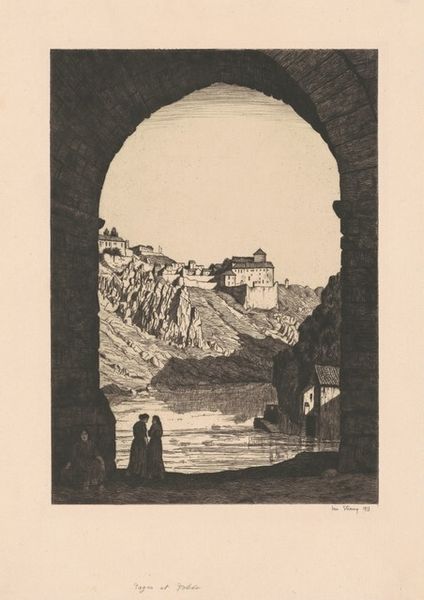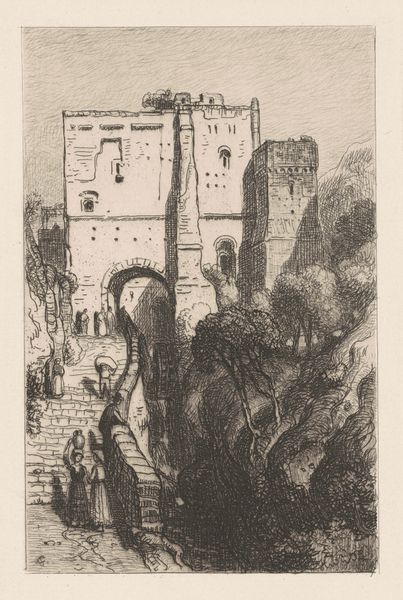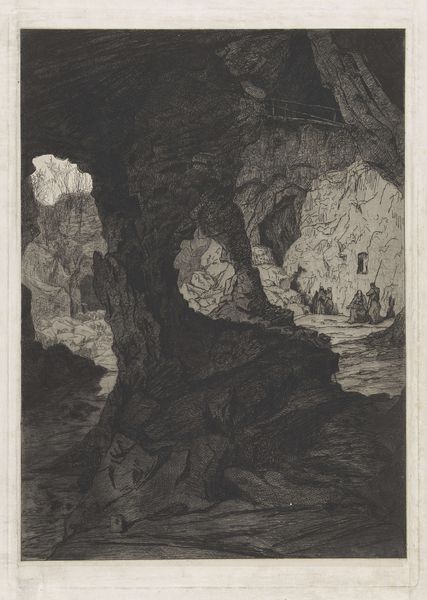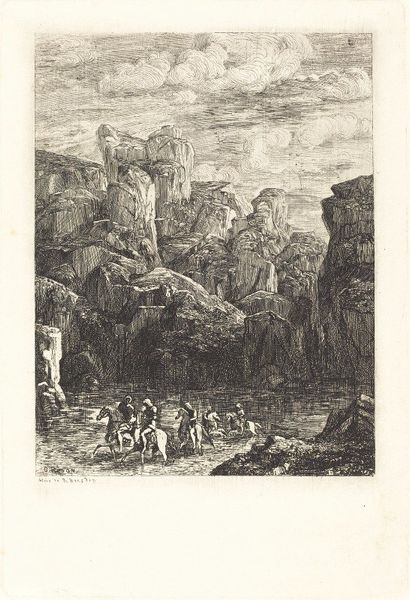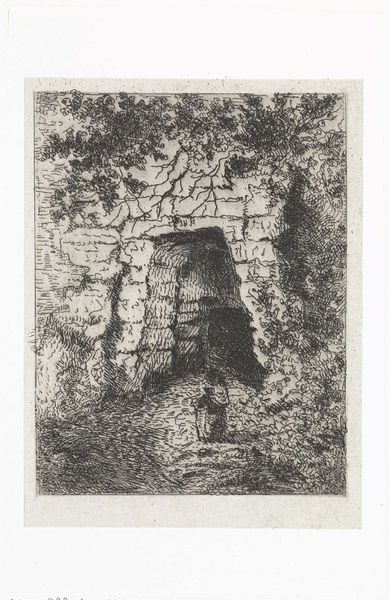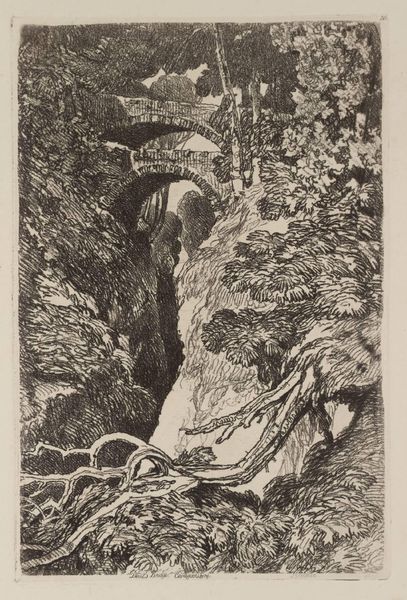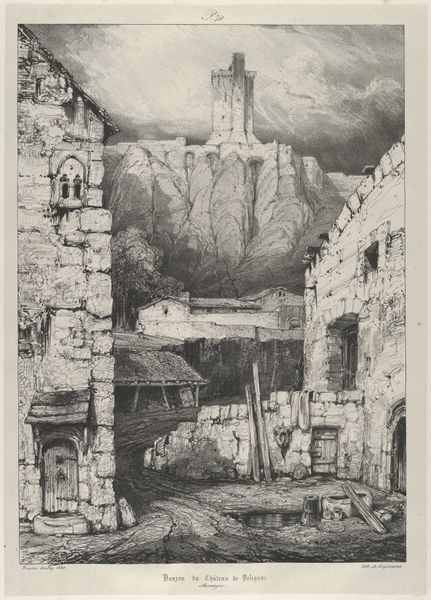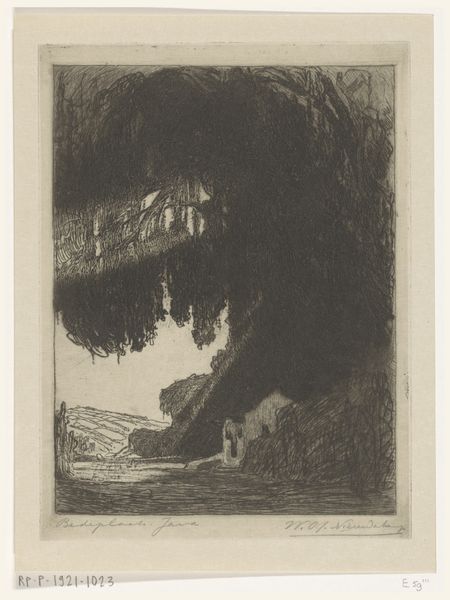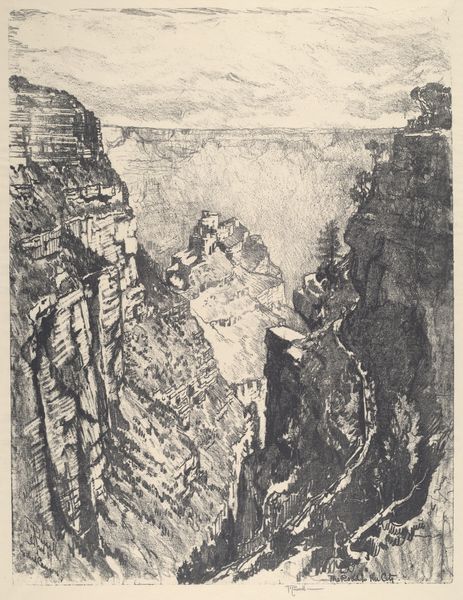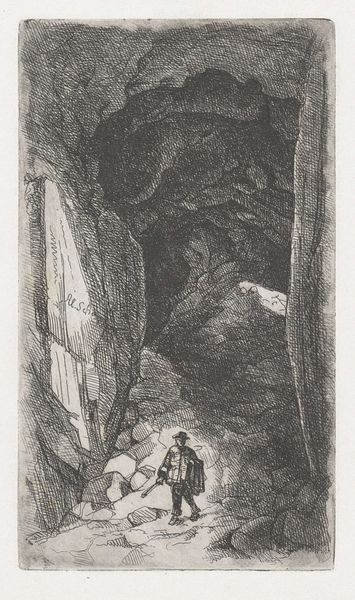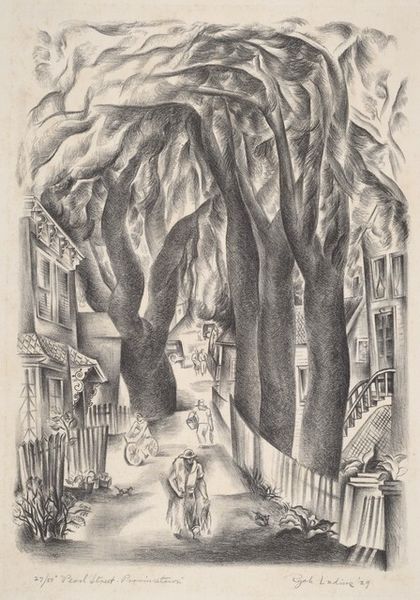
#
pencil drawn
#
light pencil work
#
ink drawing
# print
#
pen sketch
#
pencil sketch
#
old engraving style
#
pencil drawing
#
ink drawing experimentation
#
pen-ink sketch
#
pencil work
Dimensions: plate: 35.24 × 23.81 cm (13 7/8 × 9 3/8 in.) sheet: 45.56 × 28.58 cm (17 15/16 × 11 1/4 in.)
Copyright: National Gallery of Art: CC0 1.0
Editor: Ian Strang’s "Bridge at Ronda," created in 1913, is a print depicting a rather dramatic bridge. There's something about the starkness and height that feels imposing, almost…unnatural. What kind of reading do you get from this work? Curator: It’s tempting to read this bridge simply as a feat of engineering, but I think it represents more. Consider its location – Ronda, Spain. This bridge wasn't just built for practical transport. It was also a strategic response to political and social divides, quite literally bridging social divides. Look at the way the bridge visually dominates the landscape, symbolizing power and control over the natural world. Do you notice any architectural styles reflected in the image, and how might they signify this power? Editor: I see the arches…Roman, maybe? I guess they could suggest a sense of historical authority, like it’s building on this established empire and power. But did the building of this bridge, intended to unite, perhaps also reinforce existing power structures, almost like an assertion? Curator: Exactly. These structures become visual statements. Now consider how the deep shadows and light emphasize this grand architecture against the natural landscape. The artist has positioned this space as not just something we view but something we experience on a deeply emotional level, inviting discussion around identity, gender, and race through these symbolic displays of power and access. Can you see the socio-political implications represented in such a dramatic, almost theatrical scene? Editor: Definitely. I initially saw it as just an interesting bridge, but now I'm thinking about who built it, who crossed it, and who it might have excluded. Curator: And isn't that what makes art so compelling? It's not just what's on the surface, but what it makes us question about our own social structures. Editor: Absolutely. I’ll definitely look at bridges differently from now on.
Comments
No comments
Be the first to comment and join the conversation on the ultimate creative platform.
